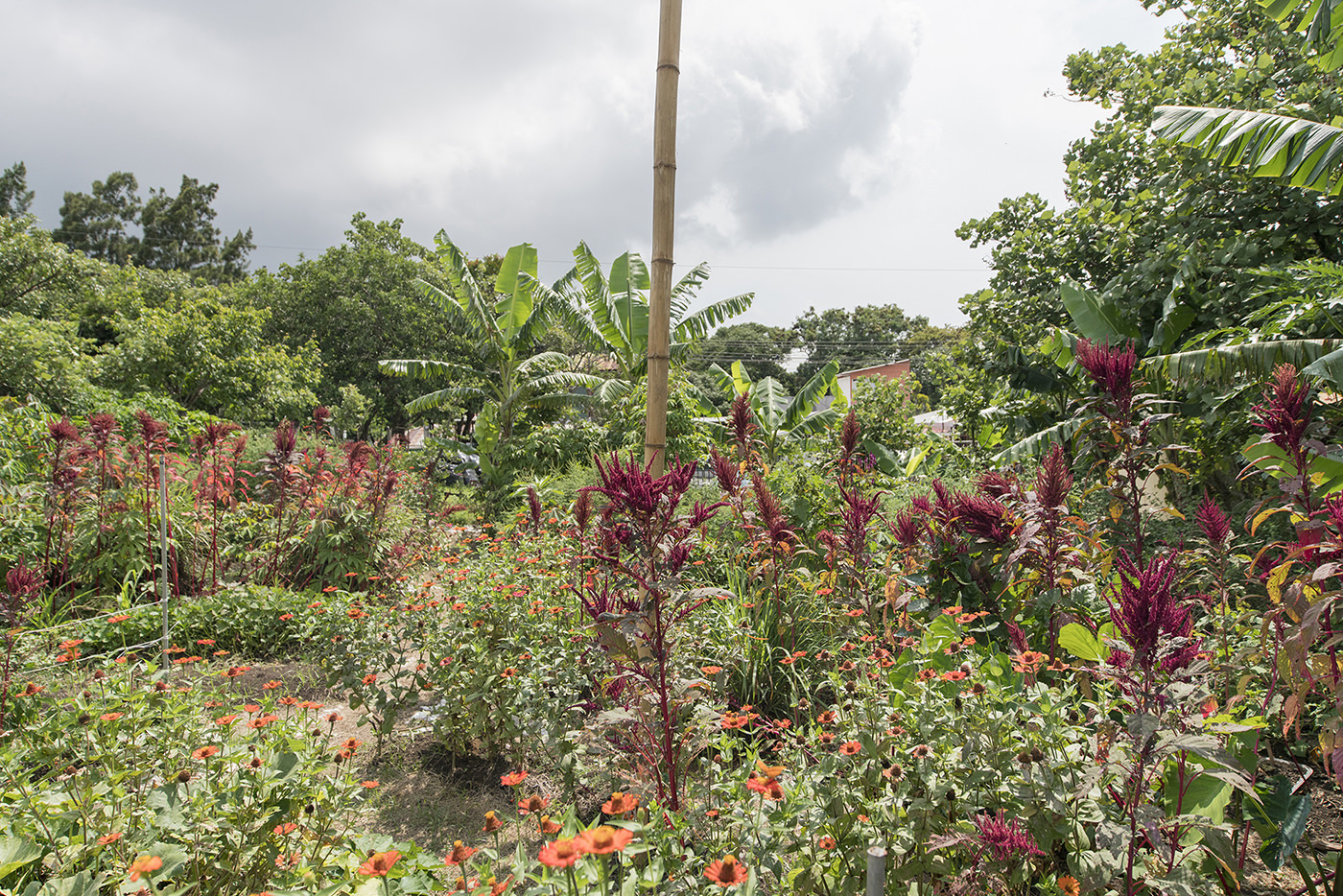
No one had come to see an artist’s performance, one early morning, when attendees shuffled into a community garden to hear an agronomist give a lecture on biodiversity. They sat on wooden benches, busily taking notes, unaware that they were experiencing one of those fascinating moments when art and life become indistinguishable.
 Reverberating nature’s constant flux, even within the confines of a single location, artist and agronomist Carlos Fernández illustrates biodiversity on a single large canvas he paints over and over again. While many artists assemble tangible documentation of their performances into thoughtfully designed exhibition-ready artworks, Carlos breaks away from convention by perpetually painting over his own work, rendering it an ephemeral medium. From the anatomy of Yucca roots to the optimal organization of a garden, from cultivation systems to which plants can be used as natural fertilizers—all of this and more has been put to the canvas, with only the most recent subject visible. The rest is hidden under thick layers of paint.
Reverberating nature’s constant flux, even within the confines of a single location, artist and agronomist Carlos Fernández illustrates biodiversity on a single large canvas he paints over and over again. While many artists assemble tangible documentation of their performances into thoughtfully designed exhibition-ready artworks, Carlos breaks away from convention by perpetually painting over his own work, rendering it an ephemeral medium. From the anatomy of Yucca roots to the optimal organization of a garden, from cultivation systems to which plants can be used as natural fertilizers—all of this and more has been put to the canvas, with only the most recent subject visible. The rest is hidden under thick layers of paint.
Carlos’ art practice does not disguise itself. It is unique in its ability to create these moments when the border between art and life blurs and any explanation would only detract from experiencing them. Because of this, Carlos avoids discussing his artistic approach in his lectures, especially when his work is being displayed within the context of everyday life. However, the conceptual underpinnings of his lecture performances come best to light on the infrequent occasions when the artist presents his ideas and knowledge in an art setting.
Carlos’ lectures and workshops often extend beyond the garden walls into galleries and museums. In such spaces, he also organizes community driven performances like seed exchanges, where visitors are asked to bring seeds from their plants at home to swap with the artist from his archive of the hundreds of seeds he collected from across the country. Gallery goers who show up with nothing to exchange are still given seeds suitable for their specific home environments, so long as they return a few seeds in a year once the new plants have grown. This is much more than just a kind gesture. It is a vital service that keeps the artist’s archive of seeds up to date.
Regardless of the venue, in Carlos’ world there is no reason to separate art and life. He takes this idea a step further by creating a genuinely credible oeuvre closely connected to the quotidian aspects of life, providing as much guidance for people in the art world as for those outside it. His teachings encourage active participation in society rather than passive observation through the arts.
![]()
This close interplay between art and non-art is consistent with the way he conceived of his own creative trajectory: juggling the two professions of artist and agronomist, before finally melding them into one consistent practice, one which connects broader social, ecological, and economical developments, while embodying the medium of lecture-performance, generating both situational and non-situational forms of knowledge.
This kind of practice might never be suitable for the greater public, as it demands that the audience take the time to listen and depends on their ability to give in order to take. These are traits that at times seem as far removed from the arts as Carlos’ aforementioned lecture venue: a public garden so far off the contemporary art map that one must look to the local community to find it.
Text by Sandino Scheidegger

This close interplay between art and non-art is consistent with the way he conceived of his own creative trajectory: juggling the two professions of artist and agronomist, before finally melding them into one consistent practice, one which connects broader social, ecological, and economical developments, while embodying the medium of lecture-performance, generating both situational and non-situational forms of knowledge.
This kind of practice might never be suitable for the greater public, as it demands that the audience take the time to listen and depends on their ability to give in order to take. These are traits that at times seem as far removed from the arts as Carlos’ aforementioned lecture venue: a public garden so far off the contemporary art map that one must look to the local community to find it.
Text by Sandino Scheidegger